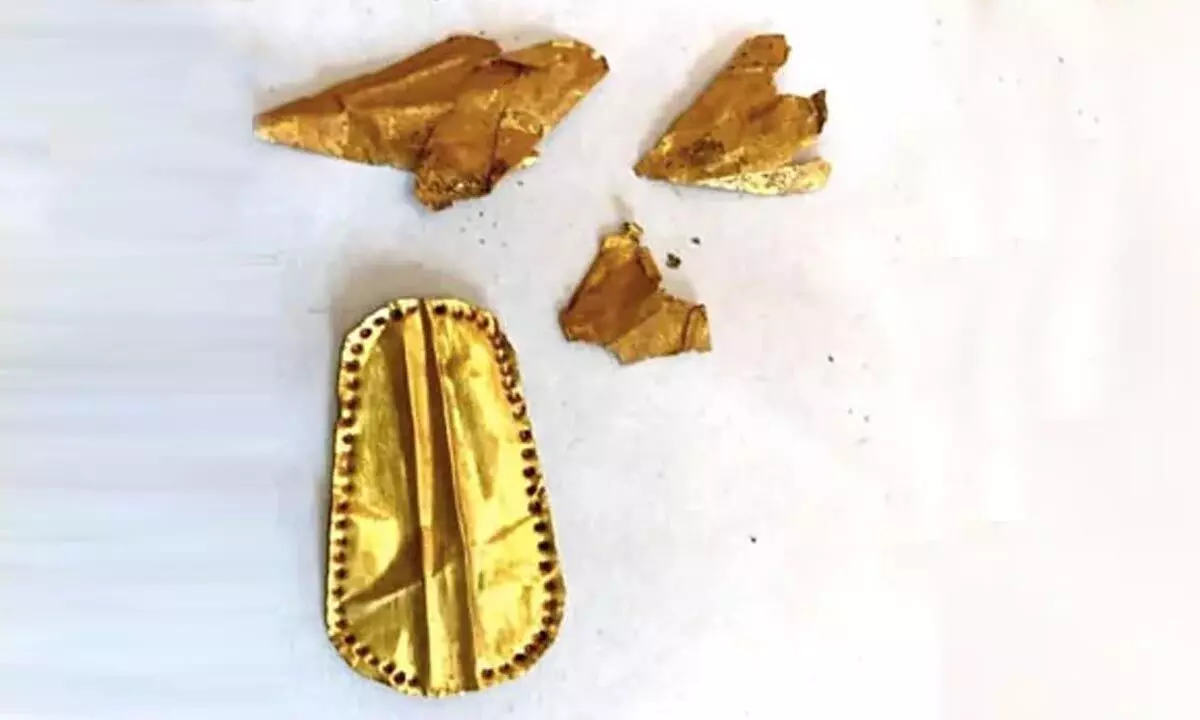Live
- 265 SCTPCs take oath in Rachakonda
- Commissioner CV Anand urges dedication as 747 SCTPCs take oath
- 270 trainee PCs passing-out parade held at Cyberabad
- Beware of bacterial predators
- Empowering youth for Viksit Bharat
- Antibiotic Awareness Week (Nov. 18-24): Beware of bacterial predators
- MyVoice: Views of our readers 22nd November 2024
- Young Leaders Dialogue: Empowering youth for Viksit Bharat
- Drug abuse eating into vitals of our nation
- M4M’ Hindi trailer launches at IFFI
Just In
Mummies With Golden Tongues Found In Egypt During Archaeological Mission


The mummies were discovered in the Quesna cemetery. (Photo/ndtv)
- During an archaeological findings in the Quesna cemetery in Egypt, several mummies with golden tongues were found.
- The site has also produced some wooden coffins and the copper nails that were used in those coffins.
During an archaeological findings in the Quesna cemetery in Egypt, several mummies with golden tongues were found. An article claims that the tombs in the area are from various eras of antiquity. The mission was carried out in a location that is a part of the archaeological compound under the direction of the Supreme Council for Archaeology.
Others were buried close to scarabs and lotus flowers that were shaped like gold, and some of the other unearthed skeletons had their bones covered in gold paint. According to sources, the mummies with gold linings are still intact, even though some of them are not in the best of conditions. The site has also produced some wooden coffins and the copper nails that were used in those coffins.
The location of these mummies was located in 1989, and it is believed to have been inhabited during the Ptolemaic and Roman eras (between 300 BCE and 640 CE).
A similar find was made in Egypt in 2021 when archaeologists excavating a 2,000-year-old site discovered a skull with a tongue-shaped adornment. However, few months later, the skeletons of a man, a woman, and a kid with golden tongues were discovered; according to researchers, the corpses are older than 2,500 years.
Another sources stated that the discovery implies that the practises at each level of burial were distinct from one another and even had various burial directions. As per the ministry, this shows the cemetery was used again during the Late Period of Ancient Egypt, the Ptolemaic period, and twice during the Roman period.

© 2024 Hyderabad Media House Limited/The Hans India. All rights reserved. Powered by hocalwire.com






